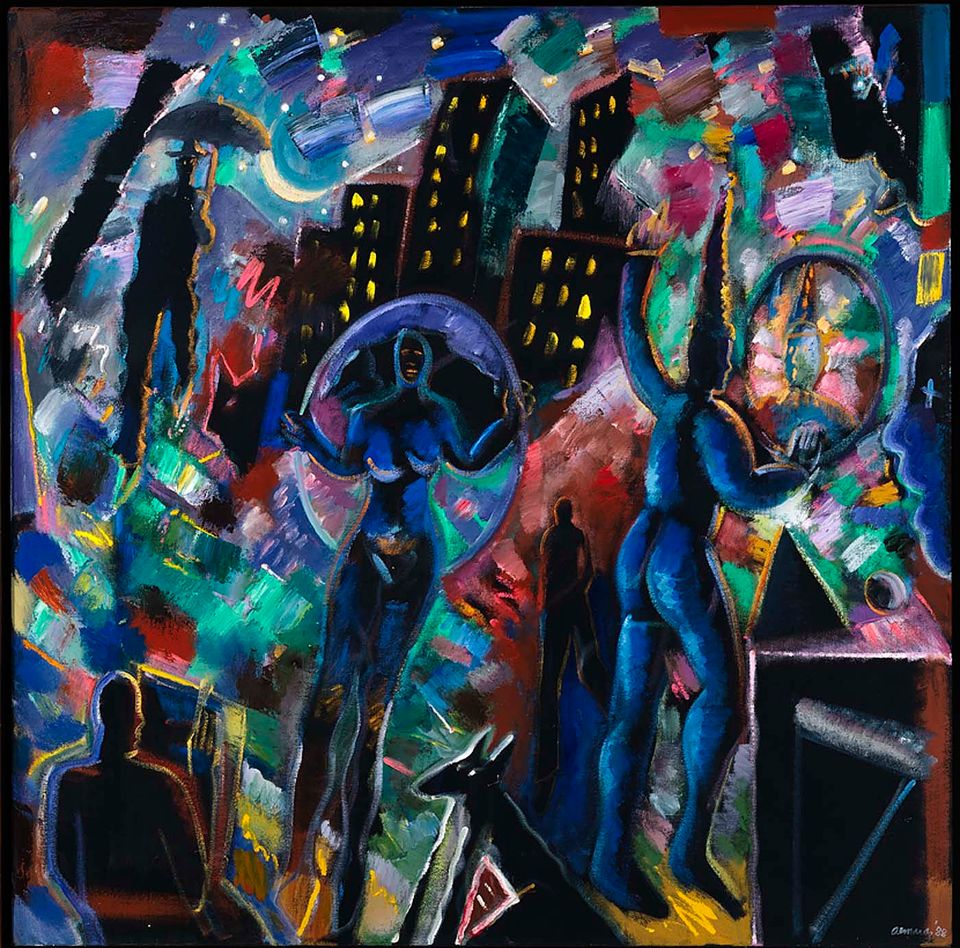Artwork Details
- Title
- À La Mode
- Photographer
- Date
- 1976, printed 2010
- Location
- Not on view
- Dimensions
- image: 12 3⁄4 x 18 3⁄4 in. (32.4 x 47.6 cm) sheet: 16 x 20 in. (40.6 x 50.8 cm)
- Copyright
- © 1976, Harry Gamboa, Jr.
- Credit Line
- Museum purchase through the Luisita L. and Franz H. Denghausen Endowment
- Mediums Description
- chromogenic print
- Classifications
- Object Number
- 2013.44.2
Artwork Description
Our America: The Latino Presence in American Art, 2013
El grupo de arte conceptual ya desaparecido Asco acuñó la frase “No Movie” para referirse a sus fotogramas ficticios de películas inexistentes. Una de esas producciones, À la Mode, presenta a una glamorosa Pattsi Valdez rodeada por dos hombres (Gronk y Harry Gamboa) como sugiriendo una trama de película basada en un triángulo amoroso. Asco hizo circular esta imagen entre algunas agencias de noticias, donde fue publicada como si fuera evidencia de un filme real. Las intervenciones de Asco en los medios de comunicación, que dieron control a los chicanos sobre su propia imagen pública, revelan la avidez de los latinos por lograr una gama más amplia de representación.
Nuestra América: la presencia latina en el arte estadounidense, 2013














